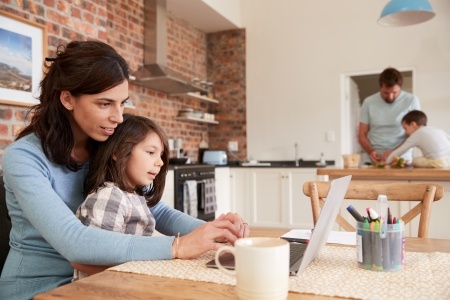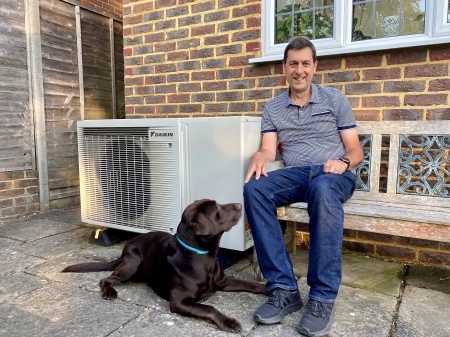
6 ways to reduce energy carbon footprint and go Net Zero
What is a carbon footprint?
A carbon footprint is defined as a way to measure greenhouse gases (such as carbon dioxide) that get released into the atmosphere by someone or something.
Everything in our world creates its own carbon footprint and some things we can change. From activities such as sending an email, to choices we make around how we travel, to what we buy.
How do I calculate my carbon footprint?
If you're wondering how to measure your daily or annual carbon emissions, luckily these days calculating your carbon footprint is relatively straightforward.
There are lots of different carbon footprint calculators out there - here's our pick of the top 3:
- The WWF carbon footprint calculator was our favourite as it looks great, is easy to use, and takes just a few minutes to complete. At the end, you'll be shown useful, relevant tips to help you reduce your carbon footprint.
- Global Footprint Network carbon footprint calculator is a feast for the eyes. The questions are easy to answer, with the option to add extra detail to improve accuracy. In the end, you'll get handy tips and be able to compare your results to other countries.
- Carbon Footprint Calculator is less visually appealing, but what it lacks in design, it makes up for in the depth of questions. This calculator strongly focuses on transport, so it's handy for working out travel alternatives for your next break.
The average carbon footprint per person in the UK per year is around 13 tonnes(1). So that we can limit global warming to 1.5°C, we need to reduce our individual carbon footprint to just 2 tonnes a year. At first glance, this sounds like a lot, so we've put together some easy tips to get you started. It's an especially good idea to follow this advice if you're a first-time buyer and able to make decisions that affect the carbon footprint of your home that you couldn't before.
Top six tips to start your journey today towards a Net Zero tomorrow
-
Choose a zero-carbon-backed electricity tariff. All our fixed home energy tariffs are backed by zero-carbon electricity from wind, nuclear and solar(2). So, by being with us, you're already playing your part in helping us achieve a Net Zero tomorrow.
-
Cut down your energy use, and stay in shape. Did you know that we could achieve 11% of the UK's 2050 carbon emissions target just by taking household energy efficiency measures(3)? The good thing here is that what is good for you is also what is good for the planet. Being more energy-efficient can reduce your costs as well as total carbon emissions.
If you have a smart meter and use the Energy Hub(4), you already see your energy use in pounds and pence. Our Energy Hub also has a few other cool features, like giving you a personalised illustration of how much you spend on things like lighting, heating and cooking each month. Plus, you can access lots of simple tips and advice. For example, did you know you could save up to £60 and 310kg of carbon dioxide a year just by turning your thermostat down by 1°C(5)?
-
Heat electric. Heating accounts for around 40% of energy carbon emissions(6). We have some simple tips and advice that can help you become more energy-efficient.
-
You might also like to go one step further. You could replace your current boiler with an electric boiler or an air source heat pump. The power source for these alternatives is electricity, which can be supplied through low-carbon sources, making them a great eco-friendly option.
-
These measures are much simpler and cheaper than expected, and the long-term savings can be significant. Find out about our energy-efficient heating solutions.
-
Drive electric. One of the biggest advantages of driving an electric car is the improvement it can make to the environment we live in. Pure electric vehicles have no tailpipe, so they don't emit any exhaust gasses. This reduces local air pollution, particularly in congested cities.
Electric cars are an attractive solution for councils challenged to clear up air quality and improve our quality of life. And it's not just cars; you can also invest in an e-bike or e-scooter to power your journey. Find out about our EV car deals, tariffs and home chargers.
-
Change when you use your energy. More of our energy now comes from renewable and low-carbon sources than ever before. However, to make the most of this, we all need to be a bit smarter in how we use energy.
The challenge is that it's not currently possible to store electricity produced by renewable generation on a wider scale, so it has to be used there and then. For example, if it's a very windy day, lots of clean energy could be produced that could go to waste if there's no demand for it.
We must start changing our habits to reduce energy use in the most carbon-intensive periods of the day. With a smart meter, you can monitor your usage in real-time, whilst Energy Hub allows you to look back at your historic hourly consumption. We are currently developing new energy tariffs, called time of use tariffs, that will help you use energy at less carbon-intensive times.
In the meantime, to understand the carbon intensity in your area, you can check out the carbon intensity forecast.
-
Think bigger! When we think of climate change, we often think of the big picture: air pollution, rising temperatures, glaciers melting, and deforestation. It's sometimes hard to see the impact we have as individuals. All our day-to-day choices contribute to the overall global climate footprint.
Get your children and young people involved and excited about Net Zero. We have a Net Zero challenge pack that can be used in schools and at home. The challenge will help young people get a sense of what Net Zero is and how they can help their community reach net zero. -
We advise taking small, simple steps today to help us meet our Net Zero target tomorrow.
Related articles

Get shifty and reduce your carbon footprint

